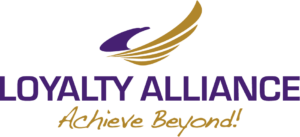As the summer winds down and we get into the fall, many things take place in many organizations that impact the employee parents: the kids are back in school, employees are taking fewer vacation days, and those end-of-the year project deadlines are closer than it seems.
If you are like many organizations, your employees took advantage of the summer weather and the kids out of school to take time off. Perhaps you felt like you had a skeleton crew at times, and most likely your employees felt the impact of a reduced staff from time to time.
You may have also noticed that some of those projects that had nice momentum going during the spring slowed down a bit in the summer months. Now that things are getting back to a more normal state, do you wonder how to get those projects back on track?
While it may seem like the best thing to do is go forward full speed on the projects with people simply picking up where they left off a few months ago, I’d like to offer you the following suggestion: Step Back and Review the Project.
When people are getting back into the swing of things, and projects are ramping back up, it’s an opportune time to take a few moments of guided reflection with your project team to review the scope of the project, the deadlines, the milestones, the deliverables, and the resources needed for the project.
Scope: Has anything changed since the project was launched that could impact the scope of the project? Have any new project team members been added who may not have a clear understanding of the project scope? Does everybody understand the importance of the project?
Deadlines: Are they realistic? Do they need to change? Do people understand why they need to change?
Milestones: What milestones have been achieved? What milestones are coming up? Is there celebration and recognition planned when milestones are met?
Deliverables: What are the deliverables for the project? Does everybody understand what these deliverables are? Do they understand how their work contributes to the deliverables?
Resources: Consider the skills and interests of the people when looking at the needed resources. How do the project deadlines work with the people’s current workload? Are there conflicts that need to be discussed? Do the team members know the priorities for their tasks? Do the people have goals for the project? Are the needed equipment resources available to the project team? Is there any investment needed to complete the project? Has this investment been approved?
Once you consider these areas, you may need to look at redistributing tasks and responsibilities to ensure a successful completion to the project. If you have had changes on the project team, then you certainly should consider looking at roles and responsibilities for the entire group.
By bringing the project team together, you get everybody on the same page, get any concerns about the project on the table, and build a solid plan for moving forward as your project team works toward project completion.
Benefits of taking the pulse of a project:
- Lower costs by reviewing projects that are in progress to make sure people aren’t working under old project guidelines when circumstances have changed
- Increase productivity by making sure people are focused on the priorities and not wasting time on non-priority tasks
- Improve morale by making sure people’s tasks, deadlines, and responsibilities are properly aligned
- Develop management by giving them a vehicle for creating a culture where people can voice their concerns in a constructive manner
Best Practices for taking the pulse:
- Conduct a prioritization activity periodically during projects to make sure people are on the same page
- Bring out project changes in key areas when they impact the end results
- Use a facilitator from outside the department (or organization) to bring fresh perspectives and unbiased suggestions to the group
- Leverage the Conversation Framework PRIORITIZE when starting a project to get an initial distribution of tasks for the project. When mid-project or when project members change, use the Conversation Framework HATS to assess how tasks need to be redistributed across the group.
For more information on Conversation Frameworks and HATS – Workload Distribution Activity, please watch these videos:
Conversation Frameworks: https://www.youtube.com/watch?v=ptFkPYbtvrU
HATS – Workload Distribution Activity: [Insert link here]
In my next post we will tackle a topic that touches every organization: Employee Recognition. While we all know it needs to happen, we often neglect doing it and this neglect can have consequences (some hidden) on the business.
Until next time.
- Mini Deep Dive: Change Readiness – Undefined Action Plans - February 24, 2024
- Lean Conclusion: Navigating Your Lean Journey - February 16, 2024
- Going Lean, Part 5: Keeping the Momentum Going - February 9, 2024

